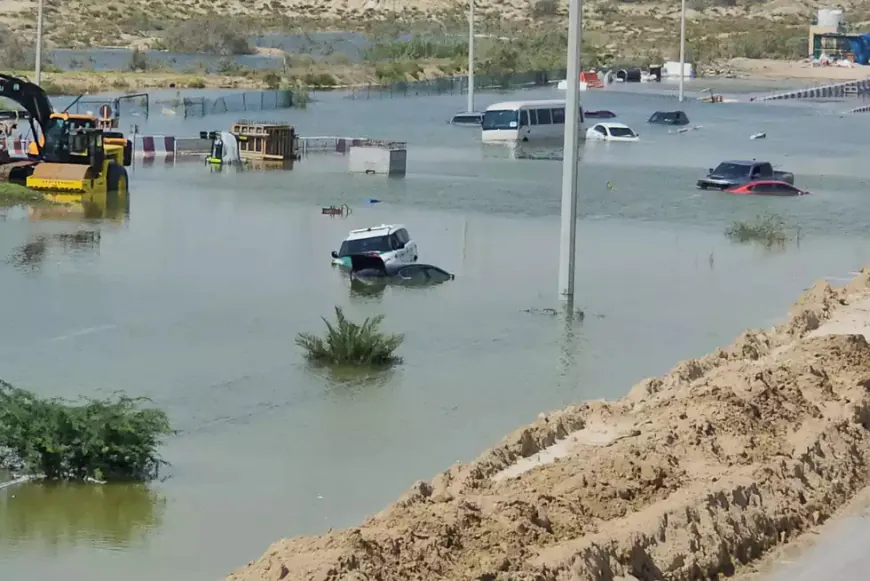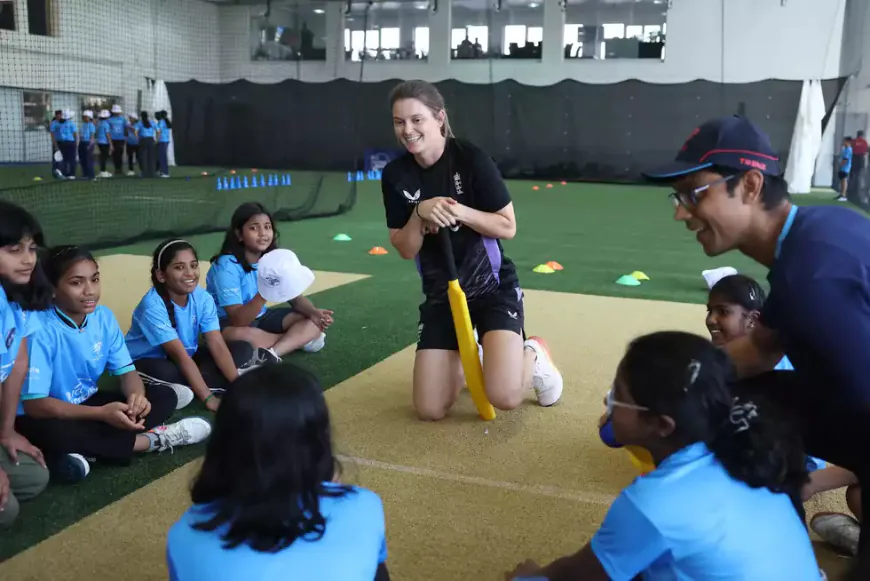How the ICC Academy Recovered from a Desert Flood
The ICC made the decision to shift the 10-team Women's T20 World Cup to the UAE due to political instability in Bangladesh, the original host. "Normally, World Cup planning takes months," Anoop explained. "For us, it was three weeks, if not less, to prepare the facility. Our team is adept at quickly turning things around, having hosted numerous events on short notice, even during COVID."

Overlooking the ICC Academy Oval 1, Anoop Eapen, operations and facilities manager, observed Sri Lanka and Bangladesh competing in their first official warm-up match for the Women's T20 World Cup 2024. Amid the action, he acknowledged the unexpected rain in Sharjah, prompting a lighthearted warning from his pitch curator to avoid discussing the weather, a reminder of the traumatic flooding event from April that still lingers in their minds.
Fortunately, this latest rain was confined to Dubai, allowing Anoop to quickly mobilize his team. A few training sessions were postponed, and the warm-up matches faced minor delays due to a brief 20-minute downpour. However, it was nothing compared to the devastation experienced on April 16, 2024.
That day, Anoop was monitoring the 13-acre facility through CCTV feeds from his home while the UAE government warned residents to stay indoors due to severe weather. The rain that began the night before escalated dramatically, turning from what initially seemed like a joke into a nightmare.
"When the CCTV feed cut out, I realized something terrible was happening," Anoop recounted. The UAE experienced unprecedented rainfall over a 24-hour period, breaking records from 75 years of weather data. The resulting chaos led to the cancellation of over 1,200 flights, with some areas in Dubai receiving more than 10 inches of rain, resulting in widespread flooding. The ICC Academy was among the hardest hit.
"On that fateful day, we had to cancel all activities at the academy," Anoop said. "Initially, it was just for that day, as no one anticipated the extent of the damage. In hindsight, better preparation might have been possible, but with the sheer volume of water, it would have been difficult."
Anoop monitored the situation through outdoor cameras, watching the tarpaulins covering the sightscreens flail violently in the wind. A staff member who attempted to reach the facility reported back with alarming news: water was flooding in from every direction.
"We weren’t spared from any side," Anoop recalled, shaken by the memory. "The floods wreaked havoc in every corner—our server room, gym, office, reception, cafe, and rehab center were all inundated. Hearing those updates from afar was agonizing, knowing that the facility I cherished was in ruins."
As the day unfolded, Anoop struggled not to dwell on the catastrophe. The following day, blocked roads rendered access to the academy impossible. He could only make it within 500 meters of the facility, forced to observe from a distance as a sense of helplessness washed over him.
"We were completely in the dark for four days. It was gut-wrenching because I could see the facility but couldn’t do anything to help," he shared.
After four long days, the water had yet to fully drain. The Dubai government intervened on April 20, assisting in pumping out the floodwaters. Given the circumstances, the academy's recovery was relatively swift, but the full extent of the damage took time to assess.
"This place was stripped down to bare concrete," Anoop sighed. "The carpeting was ruined, bubbling in many areas, and in most places, it had come off entirely. The scene was far from tidy."
He pointed out the indoor fielding area, noting that the cushioning granules beneath the synthetic grass had been dislodged. The nearby football center faced similar devastation, with the entire area covered in beige silt.
"Once we stepped outside, we found contamination in the grass, ovals, and nets," he added. "The grounds were completely saturated with water; we were trying to grow grass in the desert, and then the floods hit. There was nowhere for the water to go. The soil simply couldn't absorb any more."
The flooding left approximately 3-5 millimeters of soil needing removal and replacement. Pitches had to be completely redone, with the top layers scraped off due to settled silt, which kills the grass. "We had to replace everything to ensure it was safe for training," Anoop explained. "We just couldn't allow kids or international teams to practice on contaminated fields. It would take months to grow the grass back again."
Insurance assessments revealed multi-million-dollar damages, with Anoop noting, "The extent of the loss cannot merely be quantified in numbers; it encompasses much more than just property value."
With a dedicated team behind him, Anoop developed a comprehensive recovery plan for the academy. "We needed to tackle everything in one go," he said. "This was a monumental project because every aspect of the academy is specialized and imported from various parts of the world."
With shipment times for crucial materials taking at least two months, the team faced a race against time. "We had to start everything at once; we didn’t have the luxury of time," Anoop noted. "Walking into the academy during those two months was a constant reminder of the flood and how much work lay ahead."
Fortunately, the flooding occurred near the end of the ICC Academy season, which typically runs from September to April. This timing meant that most outdoor activities would soon be paused for maintenance. However, summer training camps for younger players were heavily impacted, with only a few relocated to the Dubai International Cricket Stadium.
As they awaited the arrival and installation of essential materials, Anoop's team worked diligently to prepare the outdoor facilities. By the time the World Cup was relocated to the UAE, they were ready to spring into action.
The ICC made the decision to shift the 10-team Women's T20 World Cup to the UAE due to political instability in Bangladesh, the original host. "Normally, World Cup planning takes months," Anoop explained. "For us, it was three weeks, if not less, to prepare the facility. Our team is adept at quickly turning things around, having hosted numerous events on short notice, even during COVID."
As a result of the rapid recovery efforts, the academy was well-prepared for the influx of teams. "The indoors and changing rooms of the ovals were completed just a week before the women's teams arrived," Anoop recalled. "We commissioned these areas while the teams began using the outdoor nets and grounds, which were our priority."
Despite the intensive damage the academy endured, the facility now appears largely unaffected. However, those familiar with the grounds, like Anoop, can still spot signs of past challenges. The state-of-the-art gym, requested by the Australian team during their stay, is set for renovation in December.
With ten international teams utilizing the facilities daily, Anoop has settled back into his routine, content that the signs of wear and tear will only live on in photographs and memories—painful reminders of a tumultuous chapter in the ICC Academy's history.























































